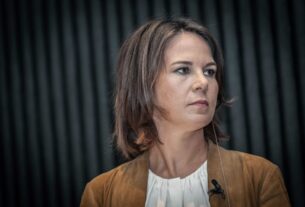Russian-backed separatists in the so-called Luhansk People’s Republic (LPR) and Donetsk People’s Republic (DPR) will hold referendums from September 23-27 on joining Russia, the Russian state-news agency TASS reported Tuesday.
Earlier, the Russian-backed separatist parliaments in the regions passed laws allowing such a vote to take place.
In response, Ukrainian Foreign Minister Dmytro Kuleba tweeted: “Sham referendums will not change anything … Ukraine has every right to liberate its territories and will keep liberating them whatever Russia has to say.”
The moves come as Ukrainian forces push back against Russian troops in eastern Ukraine. Ukrainian forces entered the strategic eastern city of Izyum 10 days ago, shortly after they began a new offensive eastward through the Kharkiv region.
Also Tuesday, Dmitry Medvedev, a former president of Russia and now head of its Security Council, said he supported incorporating the Luhansk and Donetsk regions into Russia. Officials in the Russian-controlled southern Kherson region on Tuesday also requested a referendum on joining Russia.
In a post on Telegram, Volodymyr Saldo, the Russian-appointed head of Kherson, said he hoped the region would become “a part of Russia, a fully fledged subject of a united country,” Reuters reported.
The Russian-controlled part of Ukraine’s Zaporizhzhia region may stage a referendum to join Russia in the coming days, Reuters reported, citing the RIA Novosti news agency.
Moscow-backed separatists have been fighting Ukrainian forces since 2014 in the Luhansk and Donetsk regions that make up the key industrial area of Donbas, and Russia’s recognition of the self-styled people’s republics there preceded its full-scale invasion of the country in February.
Donbas then became the main target of Russia’s creeping offensive after Moscow’s failure to seize control of Ukraine’s capital Kyiv at the start of the war.
In early July, after weeks of heavy fighting, Ukrainian troops retreated from Lysychansk, the last major Kyiv-controlled city in the Luhansk region.


